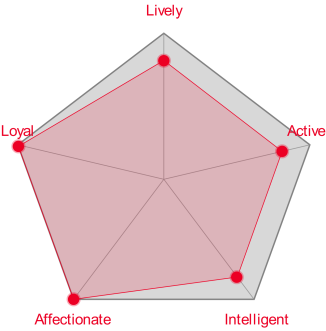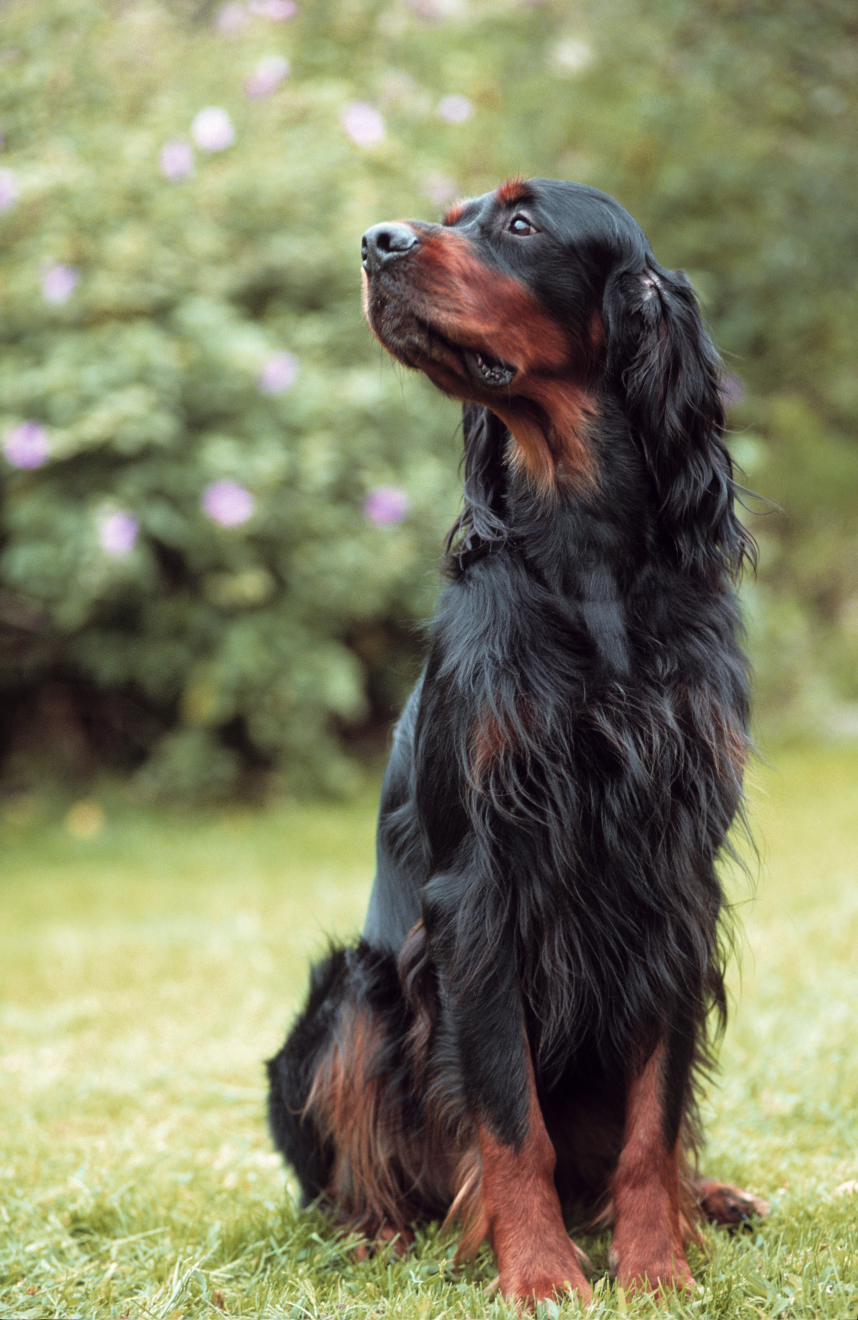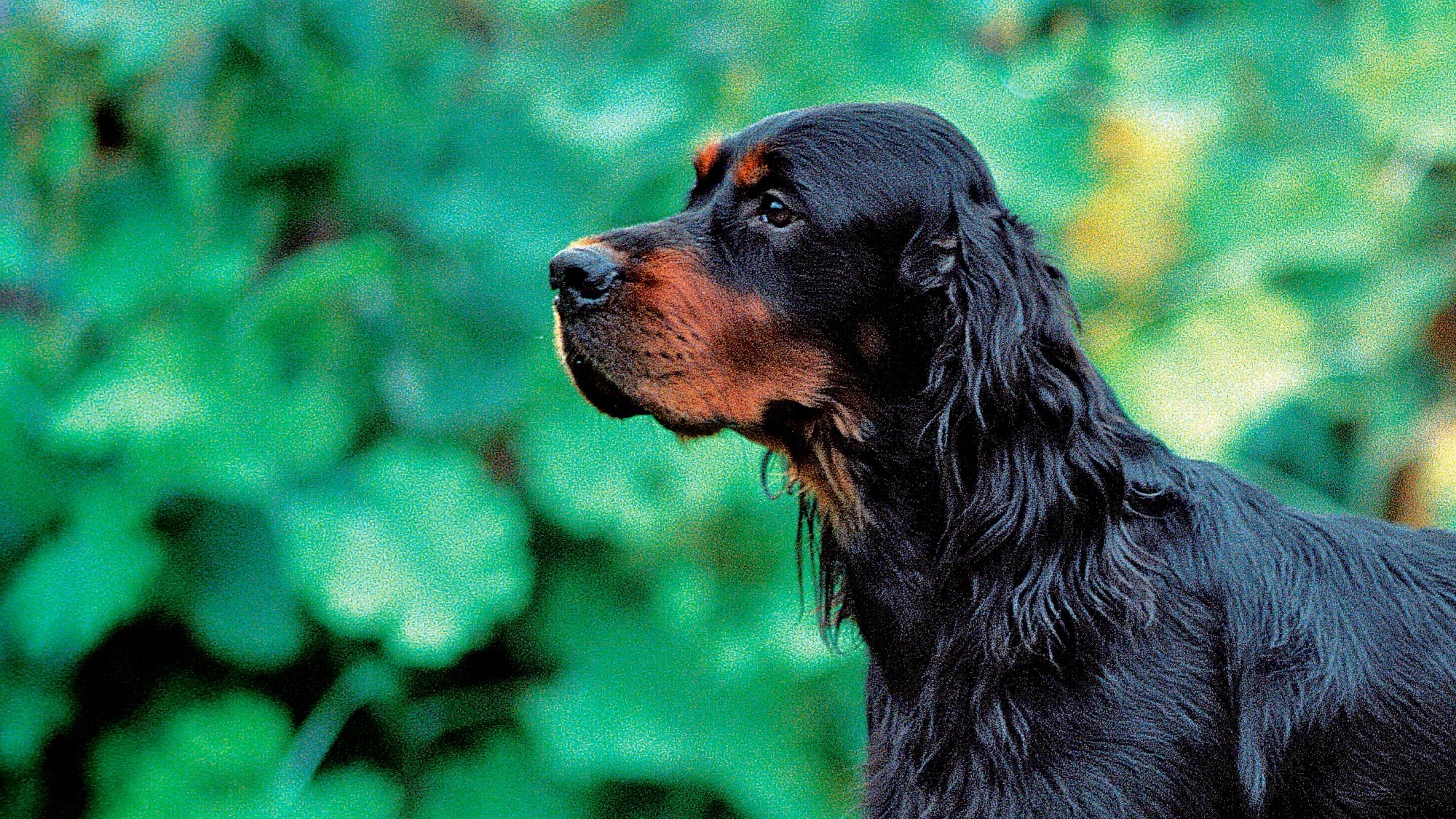
Let's talk Gordon Setters
The glorious Gordon Setter! The pride of Scotland, this jet-black and brown-coated beauty is a fan favourite as both a companion and sporting breed. As soft on the inside as they appear on the outside, the Gordon Setter has an easy-going temperament and an exceedingly loyal outlook when it comes to those they spend time with. One glance into their big brown eyes and that docility comes shining through. Healthy and enduring, the Gordon Setter is a very active dog suitable for equally energetic owners.
Official name: Gordon Setter
Other names: Black and Tan, Scottish Setter
Origins: Scotland

| Drooling tendencies: |
|
Warm weather? | |
| Shedding level: | 
|
Suited to apartment living? |  |
| Energy level (high, low, medium) *: | High | Family pet * |
|
| Compatibility with other pets: | Can stay alone? * |
* We advise against leaving pets alone for long stretches. Companionship can prevent emotional distress and destructive behaviour. Speak to your veterinarian for recommendations.
Every pet is different, even within a breed; this snapshot of this breed’s specifics should be taken as an indication.
For a happy, healthy and well-behaved pet, we recommend educating and socialising your pet as well as covering their basic welfare, social and behavioural needs.
Pets should never be left unsupervised with a child.
All domestic pets are sociable and prefer company. However, they can be taught to cope with solitude from an early age. Seek the advice of your veterinarian or trainer to help you do this.


| Baby age: | Birth to 2 months |
| Puppy age: | 2 to 15 months |
| Adult age: | 15 months to 5 years |
| Mature age: | 5 to 8 years |
| Senior age: | From 8 years |

1/7
Get to know the Gordon Setter
All you need to know about the breed
A harmonious dog, the Gordon Setter possesses a host of attributes that reflect their aristocratic origins: Bred in the Scottish Highlands at Gordon Castle, the breed was originally developed as a hunting dog whose substantial corporeality has lasted to this day.
Setters draw their name from their sporty breeding, an instinct to “set” down when finding game. They’re said to combine “beauty, brains, and bird sense.” For the Gordon Setter, the triumvirate of terms fits to a T.
The Gordon Setter is noted for their elegant packaging, a consistently black, long-haired coat topped with chestnut or mahogany markings on their muzzle, paws, and lower legs. They’re the heaviest Setter, potentially reaching 65 pounds (30kg).
It’s not just their glossy coat and intellect that makes the Gordon Setter a win-win as a household pet. They are a relaxed dog, and confident in character, too. The Gordon Setter has a healthy constitution; given their active beginnings, they’ll need a few daily outings but they’re also hugely content to just hang around once inside. Setters also have a reputation as playful, which means you’re bound to have a puppy-like Gordon Setter, even into their golden years, and many fruitful times in the family pack.

2/7
2 facts about Gordon Setters
1. Once in a blue moon
Although the Gordon Setter is widely known for their glorious ebony and chestnut colourings, a red Gordon is occasionally born to a set of black and tan parents. The cause: A recessive red gene making the dog’s colouring more of a dark chestnut. Although an anomaly on the outside, it’s still the same Gordon Setter on the inside.
2. Coming of age
The Gordon Setter is one breed that’s slow to grow, known to reach full maturity at the age of three. Their extremely high energy level means they’ll romp and revel like a puppy all that time. Although fun for the children at home, once trained, their very upbeat behaviour is something to note. Gordon Setters are pretty nonstop; make sure you’ve got the energy to match.
History of the breed
How fitting that a sophisticated breed like the Gordon Setter should have taken root in a royal setting. Although their lineage can be traced to 1620, it was the enthusiasm of Alexander Gordon, Fourth Duke of Gordon, who longed to refine the breed. Between 1770 and 1820, Gordon crossed flat-coated black and tan Collies, Bloodhounds, and black Pointers at his Gordon Castle kennel. The breed’s heavy, squared-off body was the ideal result to traverse the narrow crevices of the Scottish Highlands.
Originally called Black and Tan Setters then the Gordon Castle Setter, the American Kennel Club (AKC) changed the name to the Gordon Setter in 1892.
Formally recognised by the AKC in 1878 and the UK’s Kennel Club in 1949, numerous other clubs, such as the Gordon Setter Club of America, the Gordon Setter Association, and the Gordon Setter Club of Scotland, have also emerged from a love of the breed.

4/7
From head to tail
Physical characteristics of Gordon Setters
1. Ears
Long, low-set ears, pointed ends, well-fringed with fur.
2. Body
Medium-length body, slightly broad chest, muscular legs.
3. Coat
Exclusively black and tan coat, long hair, fringed at bottom.

5/7
Things to look out for
From specific breed traits to a general health overview, here are some interesting facts about your Gordon Setter

6/7
Caring for your Gordon Setter
Grooming, training and exercise tips
Grooming the lustrous locks of the Gordon Setter on a regular basis will keep this graceful breed looking sleek. Although they don’t shed a lot, their long, glistening hair should be brushed a few times a week to prevent mats, the fringed hair on their feet, ears, and tail trimmed regularly as well. Clip nails and clean ears frequently, and brush their teeth often – daily if you can – for the best oral health.
Another daily practice to adhere to: Exercise. A breed like the Gordon Setter will take to it with ease—in the backyard, on a walk, a hike, or in the field for sport, or all of the above! The breed has a very high level of energy so the more outside time they get, the better.
When it comes to training the Gordon Setter, think pleasurable experience all around. They take commands well, since the breed’s first instinct is to want to please their owner, to whom they bond very strongly. The Gordon Setter can be stubborn but is also very smart and learns quickly. Early socialisation classes will help form them into a well-mannered dog and a very faithful friend.
7/7
All about Gordon Setters
Traits like unflagging loyalty and a high degree of attentiveness are the hallmarks of the Gordon Setter breed. Family is central to their world: The dog bonds very strongly to one person in particular, and very much needs to be part of the human pack. When looking for a breed to add to your brood, have a close look at the Gordon Setter.
As an extremely affectionate dog, the Gordon Setter is one to snuggle up at any given moment. Their calm temperament and desire to be by their owner’s side means cuddle sessions are frequent. The Gordon Setter is for sure a protector on the homefront, but this gentle dog will always take time out to curl up on the couch. If allowed, of course!
Read more on this topic


How to adopt a dog

Things to consider before getting a dog
Sources
1 - Veterinary Centers of America https://vcahospitals.com/
2 - Royal Canin Dog Encyclopaedia. Ed 2010 and 2020
3 - Banfield Pet Hospital https://www.banfield.com/
4 - Royal Canin BHN Product Book
5 - American Kennel Club https://www.akc.org/
